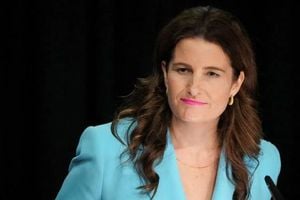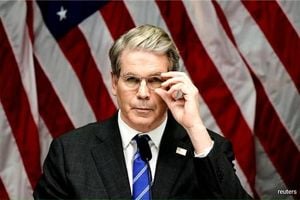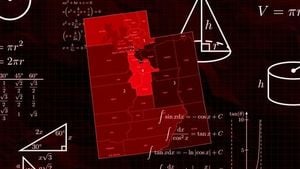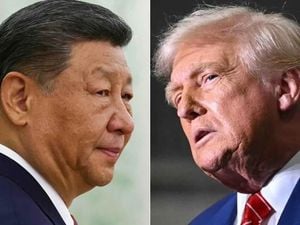In a move that has stirred both anticipation and debate across diplomatic circles, UK Prime Minister Keir Starmer has proposed a new joint peace initiative for Ukraine, drawing inspiration from U.S. President Donald Trump’s recent 20-point plan for Gaza. The proposal surfaced during a high-level phone call between Ukrainian President Volodymyr Zelensky and a group of European leaders on Friday, October 17, 2025, according to Axios and Ukrinform.
The call, which came at the end of a week marked by intense diplomatic activity, saw Starmer advocating for a coordinated, transatlantic approach to ending the war in Ukraine. According to Ukrinform, Starmer’s suggestion was to model the Ukraine peace framework on Trump’s Gaza plan, which itself has been the subject of considerable international scrutiny and debate since its unveiling. The UK Prime Minister’s proposal was reportedly delivered directly to President Zelensky and the European leaders present on the call, signaling a fresh push among Western allies for a diplomatic solution to the protracted conflict.
"The emergence of joint actions strengthens the international community’s efforts toward a coordinated path to a diplomatic settlement of the conflict, in which Europe, the United States, and other partners play a key role," Axios reported, echoing the sentiment among analysts that this initiative could mark a turning point in the search for peace in Ukraine.
The proposal did not emerge in a vacuum. Just a day prior, on October 16, 2025, President Zelensky had held talks at the White House with U.S. President Trump. The focus, according to Ukrinform, was on security guarantees for Ukraine and the so-called "Coalition of the Willing," a group of countries committed to supporting Ukraine’s sovereignty. These discussions, Zelensky later stated, centered on measures to pressure Russia toward achieving peace—a theme that would carry through the subsequent European conversations.
Meanwhile, President Trump had also been active on the diplomatic front. On October 15, he spoke with Russian President Vladimir Putin, describing the conversation as "very productive." Trump went on to announce plans for a face-to-face meeting with Putin in Budapest, where the two leaders would discuss the possibility of ending the war between Russia and Ukraine. The White House confirmed that these talks were part of a broader effort to bring both sides to the negotiating table, though the details of Trump’s proposed approach remain closely guarded.
As these initiatives unfolded, NATO Secretary General Mark Rutte stepped in to ensure that the momentum did not dissipate. Rutte proposed an urgent follow-up call among European national security advisers over the weekend of October 18-19, 2025, aiming to coordinate further steps and solidify a common strategy. According to both Axios and Ukrinform, this call was seen as critical for aligning the positions of key allies and maintaining the pace of diplomatic engagement.
Analysts have interpreted these rapid-fire developments as a signal of strengthening transcontinental dialogue. The willingness of leaders from the UK, the U.S., and NATO to coordinate so closely suggests a renewed commitment to shaping the future of peace negotiations for Ukraine. As Axios put it, such coordination initiatives “signal a strengthening of transcontinental dialogue on peace in Ukraine and the role of allies in shaping the future approach to negotiations.”
But what does it mean to model a Ukraine peace plan on Trump’s Gaza strategy? Trump’s 20-point plan for Gaza, while not detailed in the available reports, is widely believed to focus on immediate ceasefires, humanitarian corridors, and phased negotiations involving regional and international stakeholders. By invoking this model, Starmer appears to be advocating for a similarly structured, step-by-step approach—one that seeks to balance immediate humanitarian needs with the longer-term goal of political settlement.
Reactions to the proposal have been mixed. Diplomats and analysts have welcomed the renewed focus on diplomacy, noting that the war in Ukraine has dragged on for years with devastating consequences. The involvement of both the U.S. and UK, especially in such a coordinated fashion, is seen as a positive step toward breaking the current deadlock. As one analyst told Axios, “The fact that Starmer and Trump are willing to put their heads together on this, even if they come from different political backgrounds, shows just how urgent the situation has become.”
However, skepticism remains. Some European officials, speaking on background, have expressed concern that modeling Ukraine’s peace process on the Gaza plan might not account for the unique complexities of the Eastern European conflict. “Gaza and Ukraine are very different theaters,” one EU diplomat noted. “What works in one context might not translate directly to the other, especially given Russia’s role and the broader security architecture in Europe.”
Further complicating matters is the ongoing debate over the role of sanctions and military aid. During the White House meetings, President Zelensky reportedly pressed for continued Western support in the form of security guarantees and military assistance, arguing that any diplomatic process must be backed by credible deterrence. U.S. officials, for their part, have signaled that they are open to exploring new diplomatic avenues but remain cautious about easing pressure on Moscow without concrete concessions.
Adding another layer to the diplomatic flurry, President Zelensky announced on September 18, 2025, that Ukraine and Canada are jointly preparing a summit in New York focused on the return of Ukrainian children taken abroad during the conflict. Qatar has also been invited to participate, reflecting the increasingly global dimension of Ukraine’s search for peace and justice. This summit, though distinct from the broader peace negotiations, underscores the humanitarian stakes of the conflict and the need for international cooperation on multiple fronts.
Meanwhile, U.S. Secretary Marco Rubio has warned that the United States may stop mediating the Russia-Ukraine war at any time, emphasizing what he described as Trump’s unique opportunity to end the conflict. Rubio also hinted at potential new sanctions against Russia, should diplomatic efforts stall—a reminder that the threat of economic pressure remains a key tool in the West’s arsenal.
Elsewhere, ceasefire talks in Sharm El-Sheikh continue to unfold, involving the U.S., Qatar, Israel, and Hamas, with tensions mounting over humanitarian convoys. While these negotiations are separate from the Ukraine crisis, their progress—or lack thereof—may offer lessons for the diplomatic process in Eastern Europe.
As the weekend approaches, all eyes are on the urgent follow-up call among European national security advisers. The hope among Western capitals is that this flurry of high-level engagement will translate into concrete steps toward a lasting peace. Whether Starmer’s proposal gains traction remains to be seen, but the renewed sense of urgency is unmistakable.
For now, the international community waits to see if this new wave of diplomacy can achieve what so many previous efforts have not: a durable and just peace for Ukraine.




